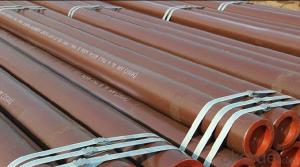Steel rebar, also known as reinforcement bars, plays a crucial role in the construction industry. These steel bars are used to strengthen concrete structures, ensuring they can withstand the weight and pressure they are subjected to. But what exactly are steel rebar specifications, and why are they important? Let’s dive into the world of steel rebar and explore the various specifications that make these bars so essential in construction projects.
The Composition of Steel Rebar
Steel rebar is made from carbon steel, which contains small amounts of carbon and other alloying elements. The carbon content typically ranges from 0.2% to 2.0%, which gives the steel its strength and durability. Other elements, such as manganese, silicon, and chromium, are added to improve the steel’s properties, such as its resistance to corrosion and its ability to bond with concrete.
Grade and Size of Steel Rebar
One of the most important aspects of steel rebar specifications is the grade and size of the bars. The grade refers to the yield strength of the steel, which is a measure of the stress it can withstand before it begins to deform. Common grades of steel rebar include Grade 40, Grade 60, and Grade 75, with the numbers indicating the yield strength in thousands of pounds per square inch (ksi). The size of the rebar is determined by its diameter, which can range from 3/8 inch to 2 inches or more.
Tensile Strength and Ductility
Tensile strength is another critical specification for steel rebar. It is the maximum amount of stress the steel can handle before it breaks. Ductility, on the other hand, is the ability of the steel to deform without breaking. A balance between these two properties is essential for the rebar to perform its role effectively in a concrete structure.
Surface Texture and Shape
The surface texture and shape of steel rebar also play a significant role in its performance. A ribbed or deformed surface is preferred because it provides better bonding with the concrete. The shape of the ribs can vary, with some common patterns being spiral, straight, or helical.
ASTM Standards for Steel Rebar
The American Society for Testing and Materials (ASTM) sets the standards for steel rebar to ensure its quality and performance. ASTM A615 is the standard specification for deformed and plain carbon steel bars for concrete reinforcement. This standard covers the chemical composition, mechanical properties, and testing methods for steel rebar.
Applications of Steel Rebar
Steel rebar is used in a wide range of construction applications, from residential buildings to large infrastructure projects. It is essential for reinforcing concrete in columns, beams, slabs, and foundations. The use of steel rebar helps to distribute the load evenly across the structure, preventing cracks and ensuring the long-term stability of the building.
The Importance of Proper Installation
Proper installation of steel rebar is crucial for the structural integrity of a building. The rebar must be placed correctly within the concrete formwork, with the right spacing and alignment. It is also important to ensure that the rebar is clean and free of rust or scale, as these can affect its bond with the concrete.
The Future of Steel Rebar
As the construction industry continues to evolve, so does the technology and materials used in steel rebar. New advancements in steel production and coating techniques are being developed to improve the durability and performance of rebar. These innovations will help to create stronger, more sustainable buildings for the future.
Conclusion
Understanding steel rebar specifications is essential for anyone involved in the construction industry. From the composition and grade to the surface texture and ASTM standards, each aspect plays a vital role in ensuring the strength and durability of concrete structures. By appreciating the importance of these specifications, we can create safer, more reliable buildings that stand the test of time.

